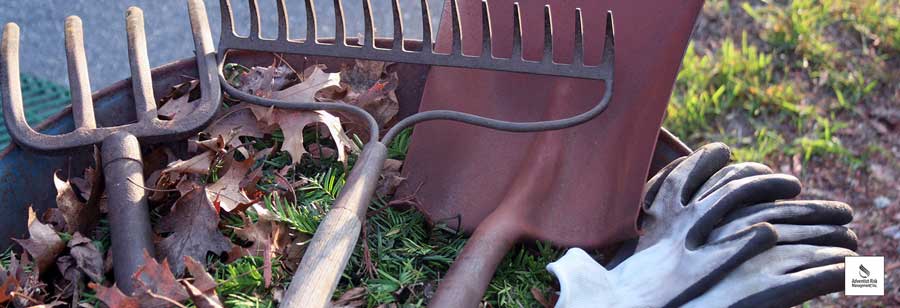As the year winds down and the holidays approach, everything seems to speed up. Suddenly there’s no time left to take care of important projects, even daily tasks! But ignoring your seasonal maintenance tasks can be dangerous for your ministry’s facilities. The top winter claims are often directly related to seasonal upkeep. Avoid incidents such as fires and frozen pipes with regular seasonal facility maintenance.
Here are three Do-It-Yourself (DIY) Seasonal Maintenance tasks to help protect your facilities before winter weather arrives.
#1 The Boiler Room
Does your church use the boiler room as another area for storage? Maybe it’s where you keep the holiday decorations, cleaning supplies, or backdrops for the children’s Sabbath program.If so, this situation is the perfect set up for an accidental fire. All of those flammable and combustible items can quickly start a fire when stored near the boiler, furnace, or water heater. Avoid any serious accidents by implementing boiler room maintenance before catastrophe sparks.
Step 1: Clean and clear boiler room of debris
- Remove any flammable, combustible, and unnecessary items.
- Clear intakes and exhaust vents.
- Check for deterioration and possible leaks.
Step 2: Properly train all personnel in charge of boiler room care
- Train staff and volunteers on all equipment, controls, safety devices, and current operating procedures.
- Create a thorough checklist for proper startup and shutdown of boilers and all related equipment according to manufacturers’ recommendations.
Step 3: Establish a maintenance and inspection schedule
- Schedule regular inspections by a duly qualified inspector, especially following extensive repairs or installation of new equipment.
- Create a record system to help keep track of all personnel and tasks. The system can include log sheets and maintenance records. Use this record system along with manufacturers’ recommendations to create a preventative maintenance schedule.
- Monitor and inspect all new equipment until safety and efficiency are demonstrated.
#2 The Walls and Foundation
Many risks can come to light if we neglect the foundation and walls of our facilities. These quick DIY maintenance tasks will create a stronger foundation and walls.Step 1: Smooth out the surfaces
- Check for damage on ceilings and walls, and set a date to repair.
- Inspect any wood trimming or painted surfaces for peeling and fading. Set a date to smooth and repaint surfaces.
- Keep floors clean and free of exterior salt, sand, and puddles from outdoor weather.
Step 2: Inspect and maintain the smooth surfaces
- Schedule weekly inspections of all floors, walls, and ceilings.
- Repair and report any damages immediately. Do not wait to fix these items. Delays could cause further losses.
Step 3: Use a trained professional to repair the surfaces where needed.
- Repair cracks, potholes, and uneven ground in roads, parking lots, and sidewalks.
- Repair or replace damaged linoleum, tile surfaces, and torn carpets.
- Use yellow caution tape or traffic cones along the edge of repair areas until repairs are complete.
#3 The Dark and Cold Areas
With the excitement of the holidays, the influx of members attending church services, and the special programs put on, it’s easy to forget about the “dark and cold” areas of our facilities that need to be maintained as well. This DIY task will help you make sure the unseen areas remain unseen, rather than leaking on a choir member’s head during the Christmas Concert on Sabbath morning.Step 1: Keeping the cold out and the heat in
- Close the crawl space and basement windows.
- Enlist a trained professional to clean the chimney flues, furnace air filters, radiators, and air registers.
- Cover and secure air conditioners.
Step 2: Maintaining a dry interior
- Clean and regularly check all gutters and downspouts. Melting snow and ice should drain down and away from the building, rather than backing up and causing damage.
- Check and clear drains on flat roofs, which can become clogged from falling leaves in autumn.
- Check condition of roofs for possible deterioration of roofing materials.
Step 3: Keeping your pipes intact
- Bundle up your plumbing, keeping pipes and exterior faucets insulated.
- Keep the heat turned up when temperatures outside drop. The thermostat should be set no lower than 55 F (12.78 C). Open cabinet doors under sinks in kitchens and bathrooms to allow heater air to circulate underneath. Set the temperature higher for areas that do not get as warm as others.
- Disconnect water hoses from all faucets. Close the valves and drain water from the pipes leading to the outside where buildings have interior shutoff valves for outside faucets.


